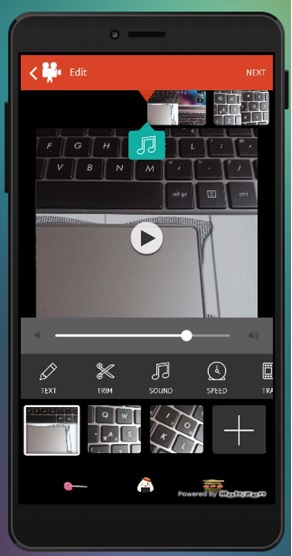Thanks very much for those of you who attended the DigiEnable Producing Video with your Smart Devices workshops. And for those of you who’ve stumbled across this page via search, welcome!
Here you’ll find an overview of the top tips we mentioned in the workshop and those vital links to those useful sites and apps to get you digital storytelling out there!
Any questions, or if you want to bring us in for a future workshop – contact us at Info@DigiEnable.co.uk
What is Digital Storytelling?
The 3 Stages
Pre Production
Production
Post Production
Styles
Think about the style of my project before you start, it’ll help focus your efforts, and mean you spend less time recording content you don’t need!
“The aim of an interview is to provide, in the interviewees own words, facts reasons or opinions on a particular topic so that the listener can form a conclusion as to the validity of what he or she is saying.”
Robert McLeish
Pointers for Pre-Production
Prepare for your interview
Think about the questions you are going to ask
Ask questions with “informed naivety”
Avoid multiple, leading or non-questions
Use your non-verbal communications to control the interview
Think about your locations – look and listen around you before you press record!
Useful Video Production Links
Sizes of camera shots – http://salvadorsanvicente.tumblr.com/post/29802529406/portraits-medium-wide-shots
Camera angles and zooms – http://laurenguyverasmedia.blogspot.co.uk
Storyboard basics example – http://accad.osu.edu/womenandtech/Storyboard%20Resource
Apps for Smart Phones and Other Devices
Video app of the moment (and our current favourite) VideoShop – http://www.videoshop.net/features – which works on Android (free), iOS (free) and Windows (£1.50) smart phones.
Or Video Editor Free for Blackberry (free)
And Movie Creator for Windows Phones (free).
We also checked out https://giphy.com/create/gifmaker to create your own Gifs, and the app http://www.phon.to/ to put simple text onto images. Simple but effective for your online marketing!
Uploading Your Videos via Your Device
And for uploading your finished videos we recommend Youtube for maximum exposure. You can upload straight from our favourite video editing app VideoShop (links above) or use the Youtube app (Android) (iOS) (Windows) and via the share button in Blackberry.
Video Editing Tips
90% of information transmitted to the brain is visual. Visuals are processed 60,000X faster in the brain than text.
Videos on landing pages increase page conversions by 86%
And remember…
Tips to get you content seen
Be Regular and if possible unique
Word of mouth, offline events
Guest Bloggers
Google doesn’t like mistakes, neither do your readers
Utilising Links and Backlinks
E-mail marketing – Still the most effective form of marketing
Use already established networks, social media, bio links, forums etc.
What ‘added value’ can you offer
Give them a reason to come back
If we can help in any further ways, just give us a ping at Info@digienable.co.uk


